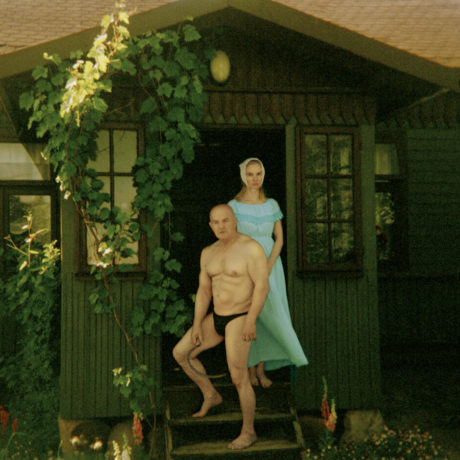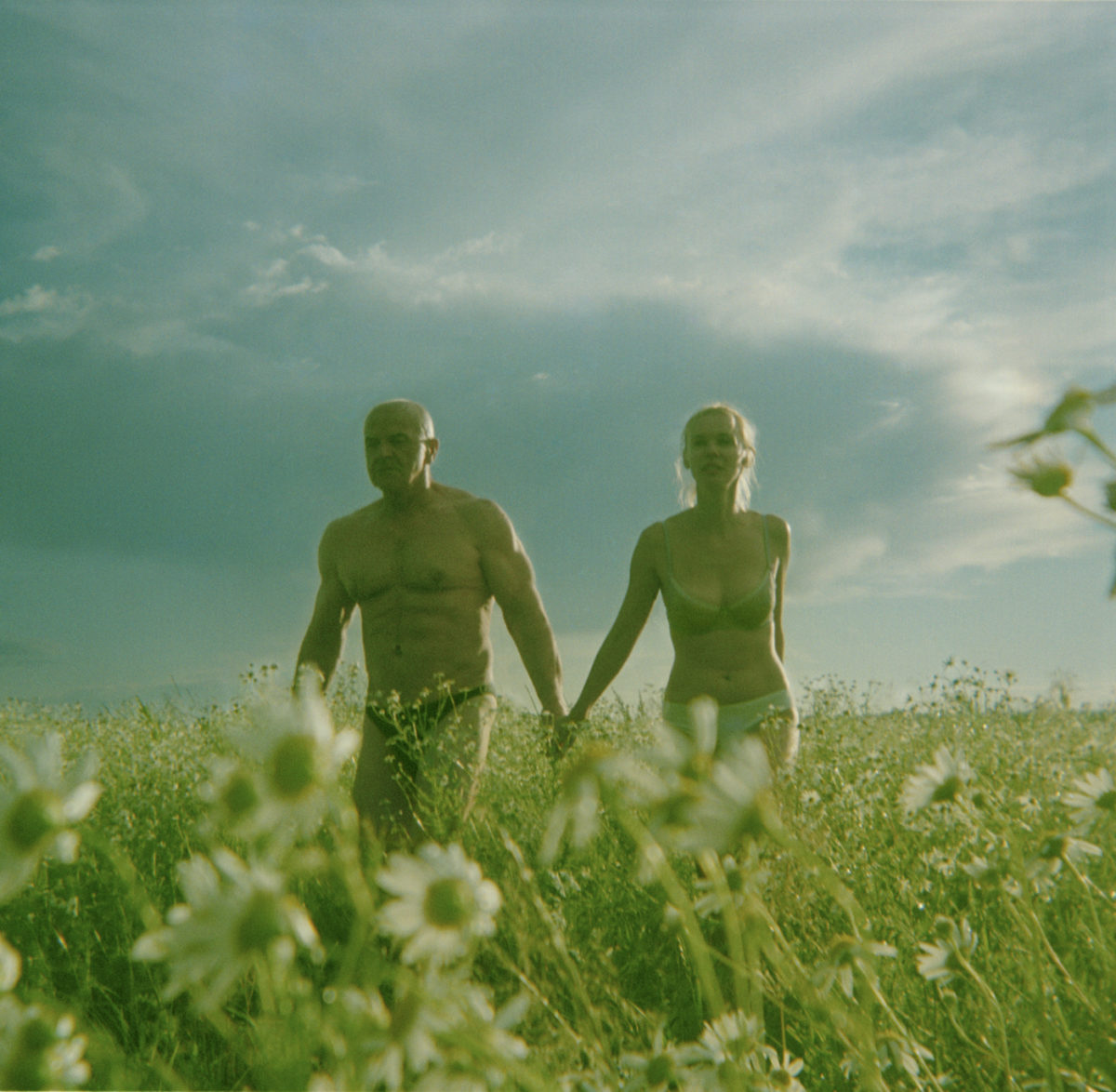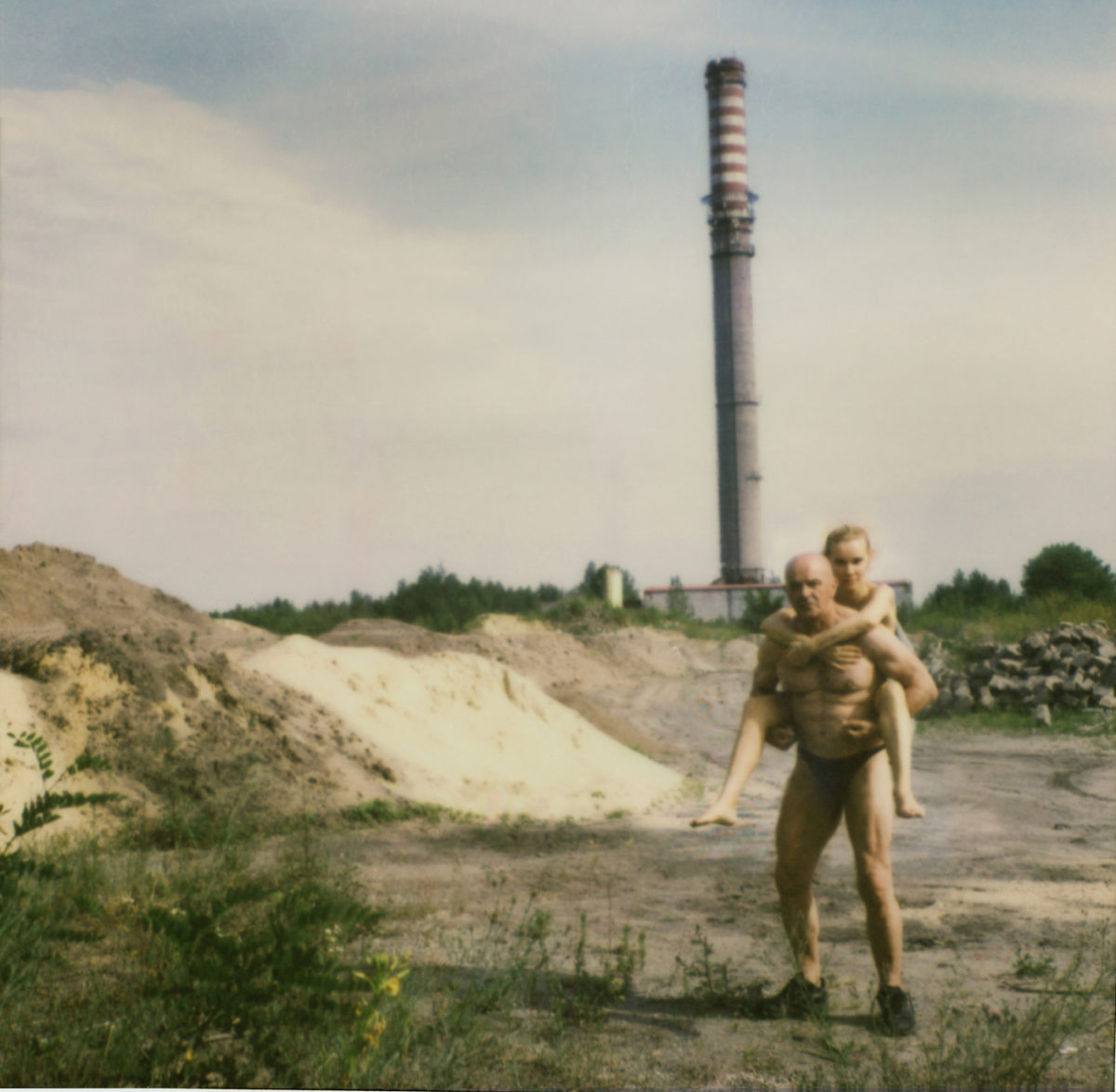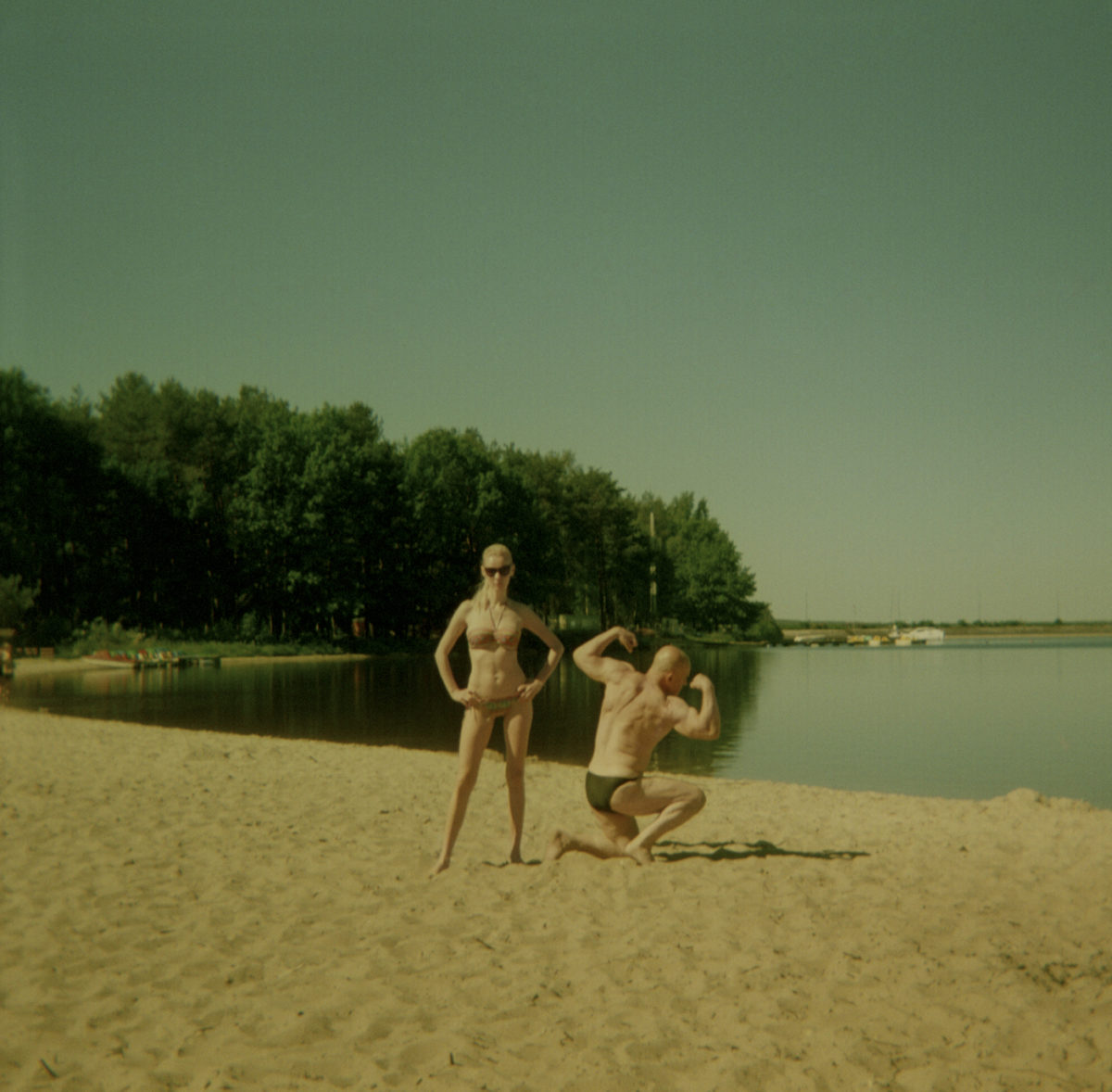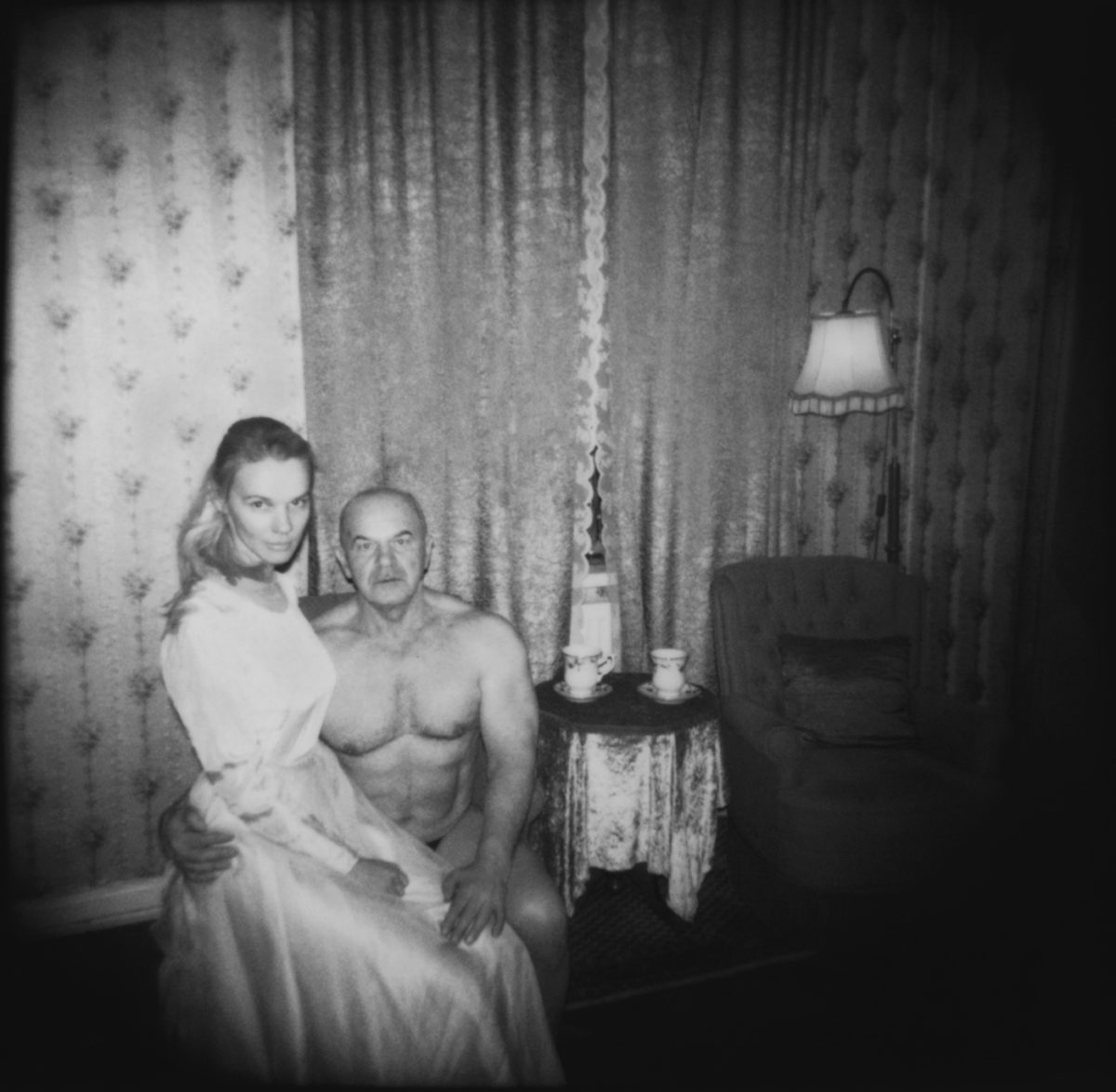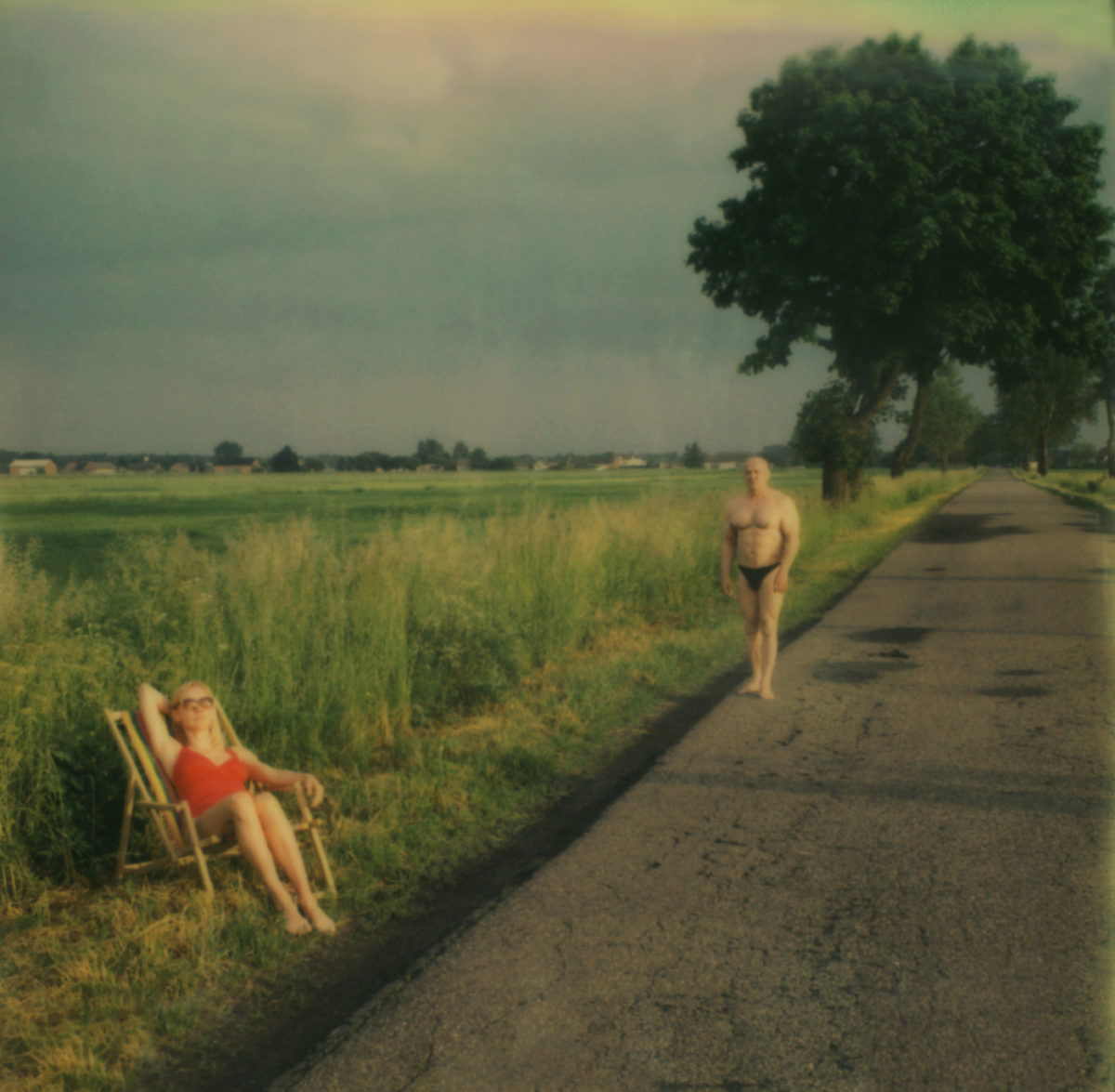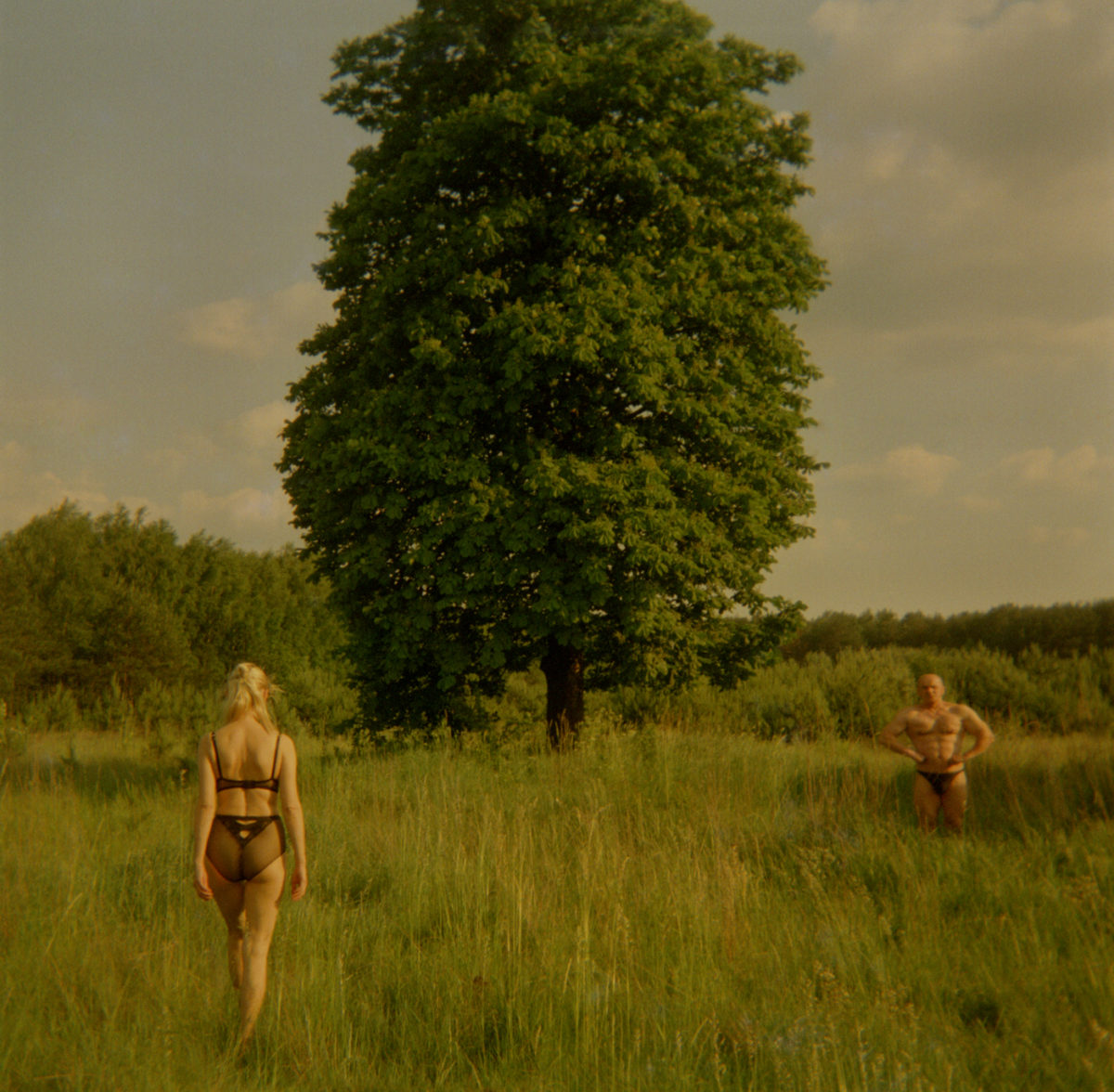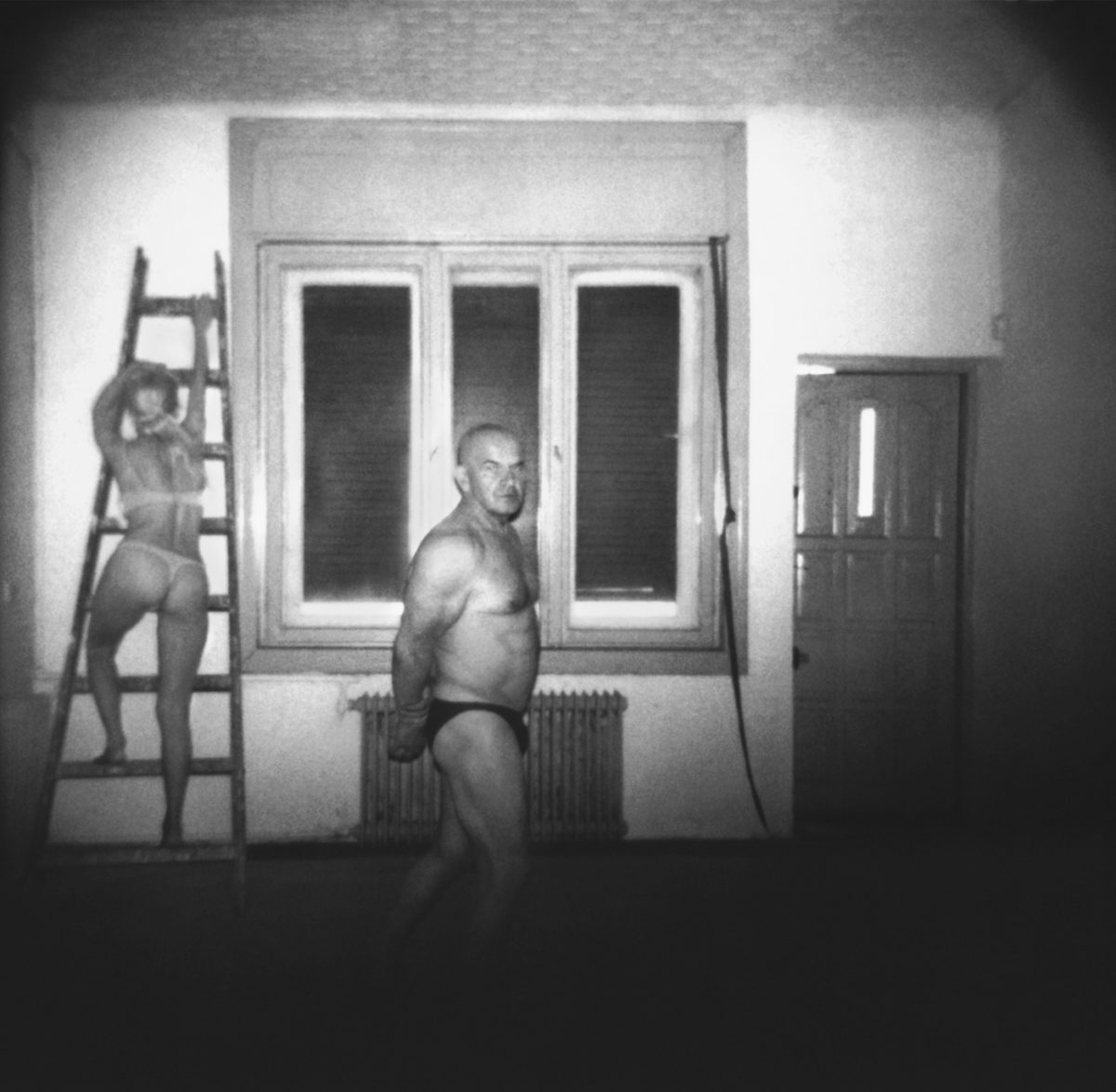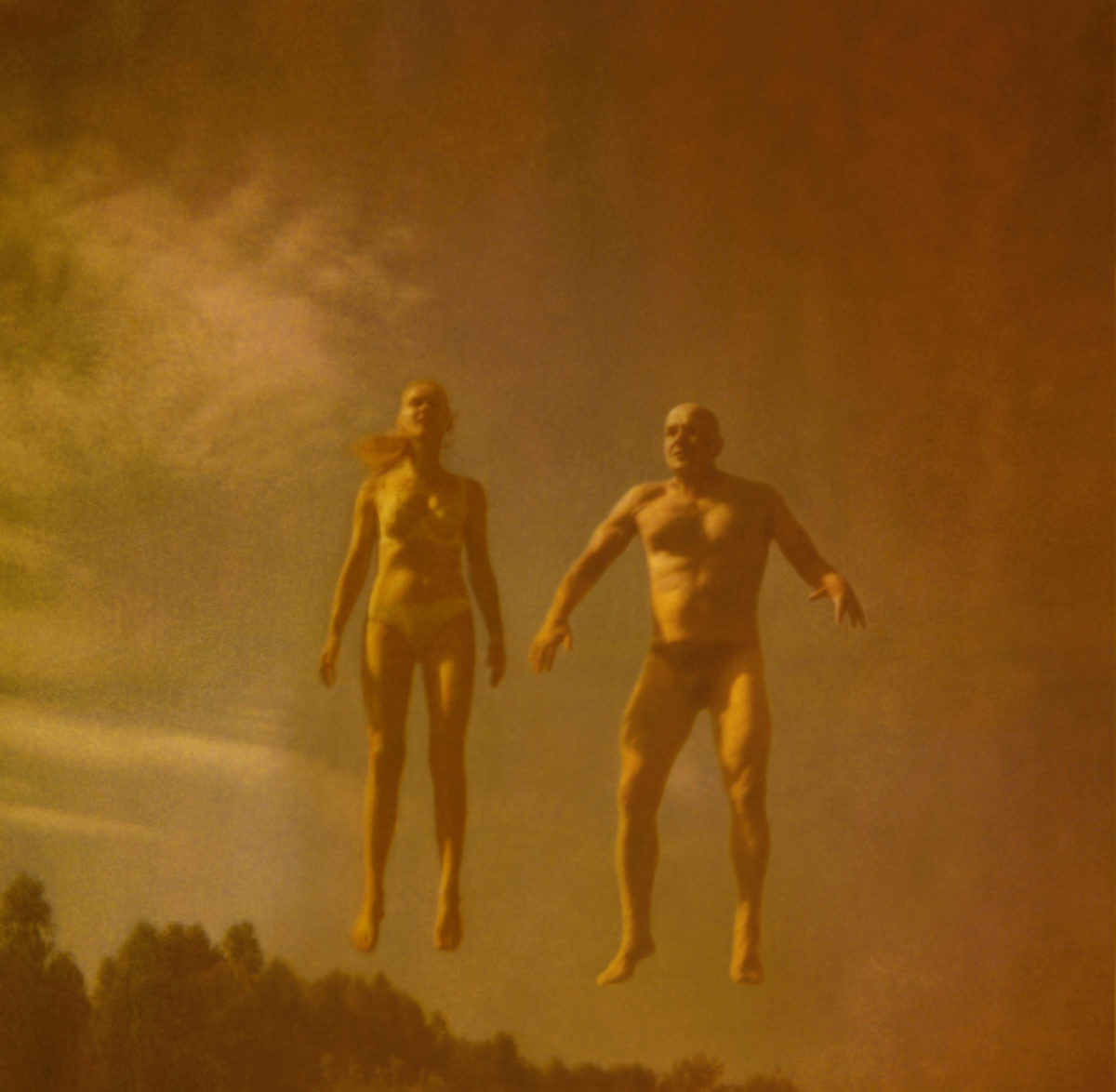From the age of eight, Aneta Bartos was raised by her father alone in a small city in Poland. In 2013 Bartos, who now lives in New York, spent the summer back in her hometown shooting her father, a competitive bodybuilder. “At the age sixty-eight, my father asked me to take a couple of shots documenting his body,” Bartos explains. “He has been involved in competitive bodybuilding for over half a century, and wanted to be immortalized in a beautiful and artistic way before his body degenerated.” Pastoral, nostalgic scenes recall childhood memories, hot summers spent in a conservative and mostly Catholic part of Poland—there’s undoubtedly a strand of wilful rebellion against a repressive way of life in Bartos’s work.
“We seem to be looking at everything through our sociocultural context”
For three summers, Bartos continued to take her father’s portrait, before she decided to get in front of the camera with him. With her father clad mostly in figure-revealing speedos, Bartos in swimwear and lingerie, the resulting pictures have stirred “some negative reactions”. But what is it that we find so hard to see here? Is it the way they look? The fact that they are able to be comfortable in their own bodies, and their own sexuality, and stand side by side? In tender, playful and sometimes wistful poses, they are together, and alone—and they look at the camera, rarely at each other. They mirror each other in the way they pose and court the camera; they share their exuberant exhibitionism.
“From the very start of Family Portrait, my father and I were at total ease shooting in our underwear, as we grew up in a household that perceived bodies in a healthy and natural way. The body does not need to be associated only with sex and perversion. This was, however, in stark contrast with our society,” Bartos recalls, thinking about the dominance of religion. The insidious influence of pornography on our perception of gender and power has polluted any kind of expression of male and female bodies. “We seem to be looking at everything through our sociocultural context. This is very much a way to control society and keeps us in a cell of a limited way of thinking.”
“The body does not need to be associated only with sex and perversion”
“Without clothes, we are usually reducing everything to nudity or sex and dismissing a more nuanced reading that might be lurking beneath. There are multiple layers that I am exploring in this project, most recently aging, the cycle of life, the notion of our material death, our relationship with nature and its context to the universe—yet many people like to gravitate toward more sinister readings.” Bartos seems to provoke with her poses—yet what she really questions is why we have lost the ability to express a free and easy physical closeness, love and affection between a father and daughter.
Particularly in today’s context, we’re not used to seeing positive representations between an older man and a younger woman. Bartos doesn’t shy away from the question of sexuality; it is present, but it co-exists, she and her father are clearly independent beings, but unashamed of celebrating the comfort of being together—subverting the entrenched idea of an older powerful and authoritarian father figure. Her father’s physical prowess is in decline—his posturing and posing are performed doggedly—shown next to her effortless seduction of the camera.
Over the three years she has been making the work, it has become physically and emotionally more painful for her father. He was unable to travel to Antwerp to see the exhibition, where it is currently on show, for health reasons.
“His realization that he is losing mastery of his body along with signs of the deterioration of his functions have made both of us uneasy to document it. Nevertheless, I know he would never refuse to continue the project, even though it has moved from immortality to mortality, a metaphor of a dying world, of which my dad is part.” Bartos reminds us that a father can be vulnerable.
Aneta Bartos: Family Portrait 2015 – 2018
Until 25 May at Tommy Simoens Gallery, Antwerp
VISIT WEBSITE